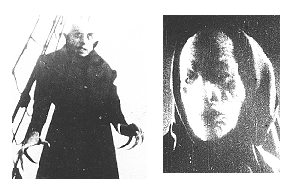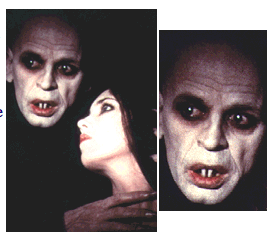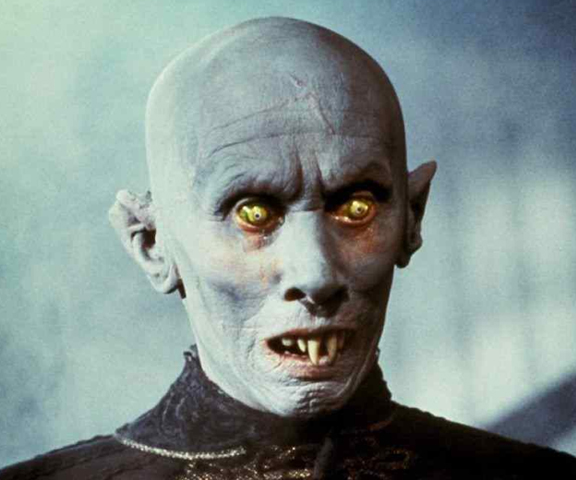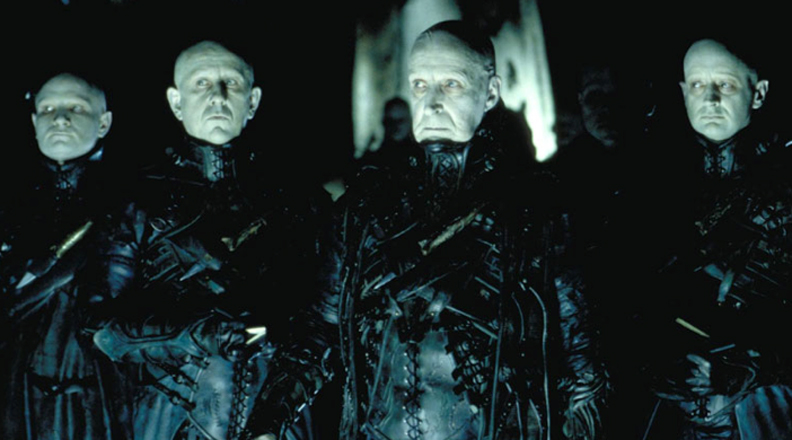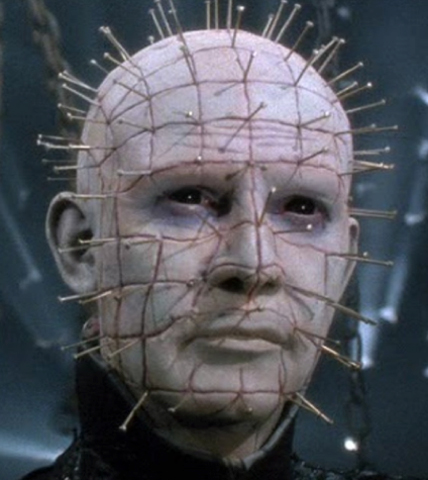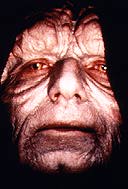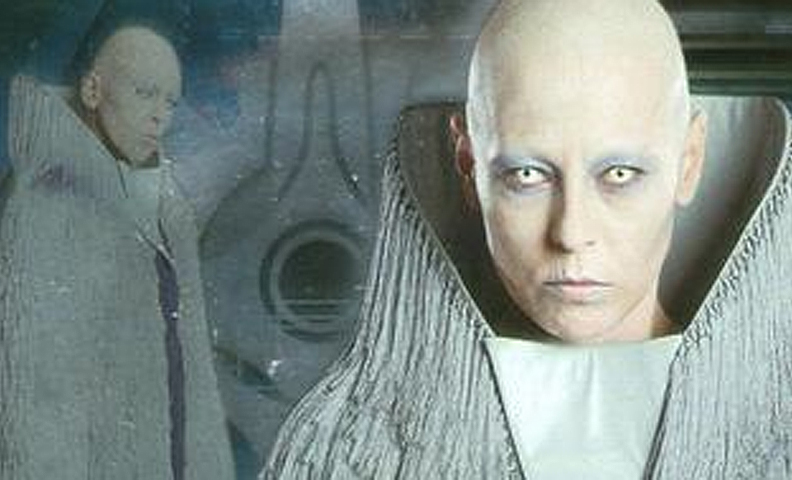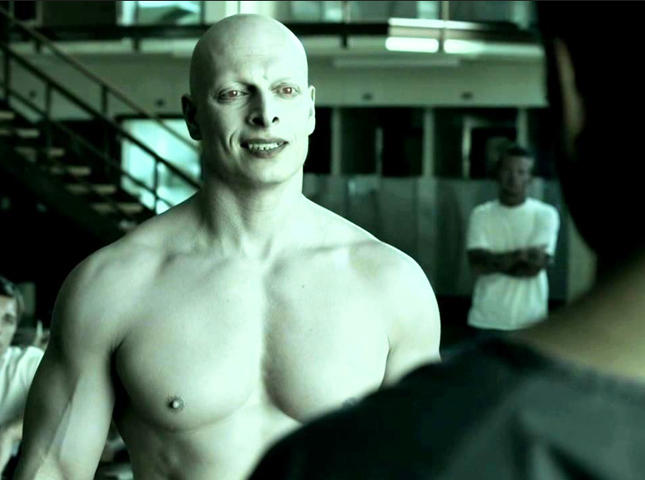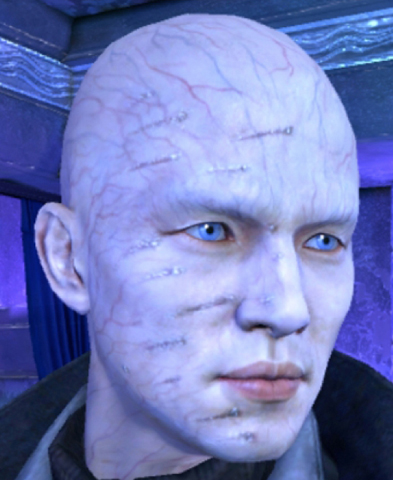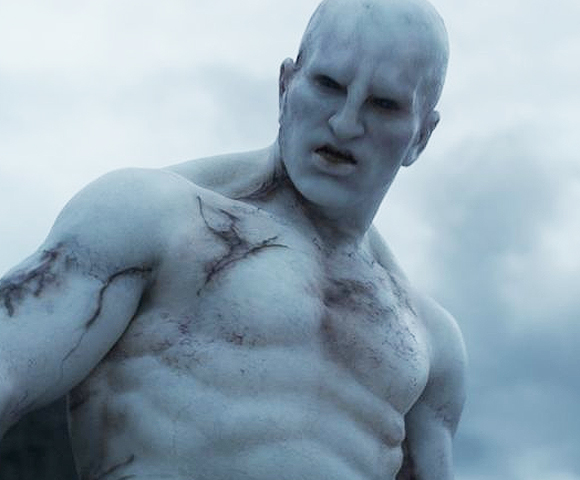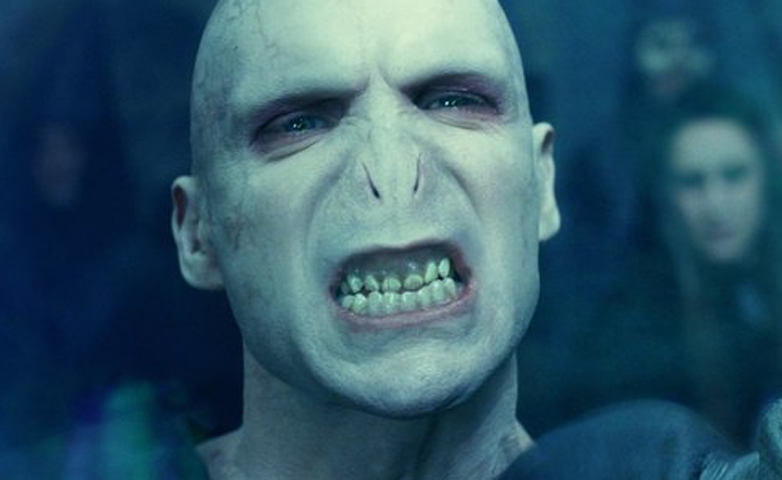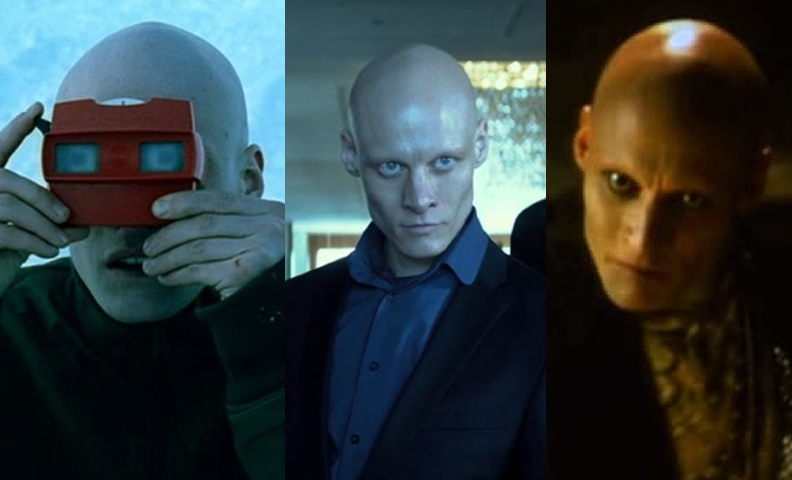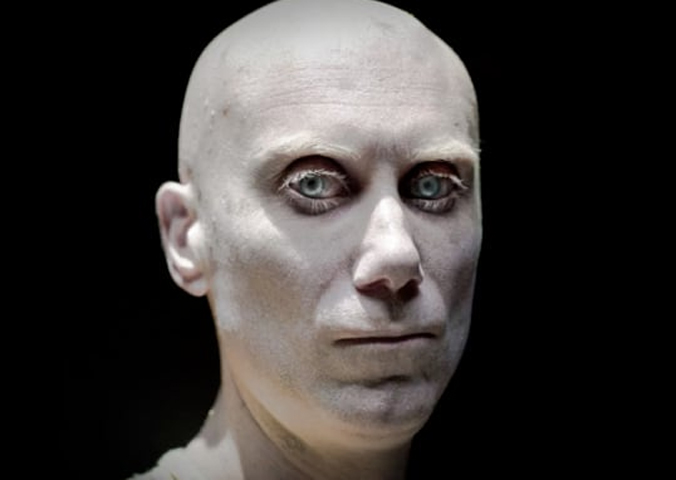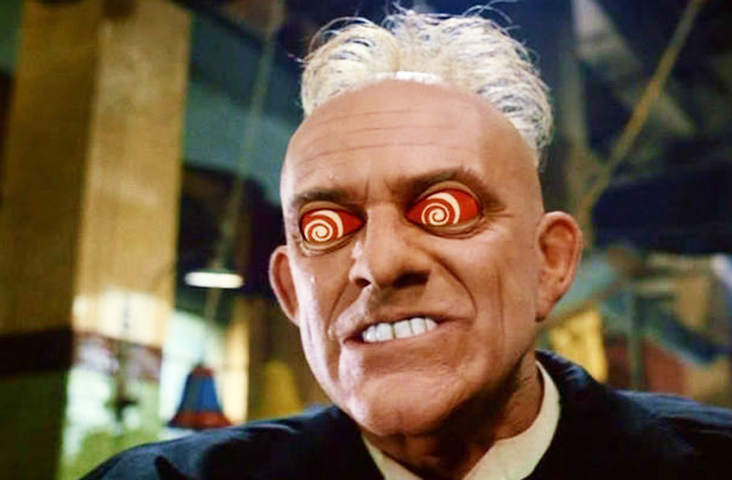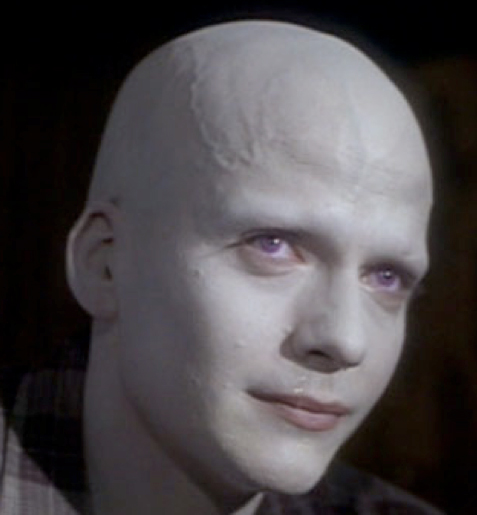Break out your pens and papers, folks, skinema is going academic on ya! Yes, our very own Dr. Vail Reese has discovered a heretofore unrecognized skin condition. This has not been described in the the dermatology textbooks, and for a very good reason. This disorder is not seen in the real world, only in the reel world. A combination of two other conditions, and following movie logic, it is therefore used to identify evil characters. We know the question on your lips: just which two skin disorders are combined to create this unique entity?
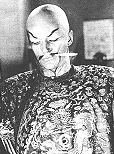
First: that old evil standby, hair loss, or alopecia. Stereotyped Asian villain Fu Manchu shows the stereotypical loss of hair so common on-screen.
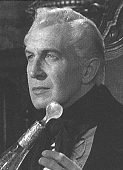
Second: albinism. The shock of white hair and pigmentally challenged skin of Vincent Price in “The Fall of the House of Usher” is another in a long line of pale purveyors of punishment.
Over the years, movie makers have paraphrased the motto of Reese’s peanut butter cups: Two great tastes that taste great together. Repeat after us, class: Albinopecia!

Characters with albinopecia show both hair loss and colorless skin. It may seem odd, but this is one of the earliest skinematic examples, dating back to the silent film age. To the right, view actor Max Schreck, in the 1921 Dracula ripoff "Nosferatu." The pale scalp was not scary enough, so they cleverly added serious hangnails to the mix. Another silent movie from 1923 is "The Four Horsemen of the Apocalypse." It features this friendly fellow, the Pale Rider, with albinopecia and wrinkles. In the days without sound, it seems piling on skin conditions helped add suspense.

Why has this combo been so irresistible to filmmakers? One reason could certainly be the tired adage that copying is the sincerest form of flattery. "Nosferatu" is considered by many to represent the seminal horror flick. Though Schreck's performance was later overshadowed by Bela Legosi as Dracula in the early 1930's, tributes to "Nosferatu" account for at least some of the repeated uses of albinopecia. One true remake was released in the 1970's. "Nosferatu the Vampyre" (1979) was made by German director Werner Herzog. In this version, the use of color film accentuates the vampire's paleness. Note the rat-like teeth, also lifted from the silent version. Certainly a shoo-in for the Dentistry in the Cinema web site, though Hollytooth.com doesn't have a very good ring to it...

Even the finest masters of horror could not resist using a Nosferatoid bloodsucker. Writer Steven King ("Carrie") and director Tobe Hooper ("The Texas Chain Saw Massacre") joined forces to make the TV movie "Salem's Lot" (1979). This vampire levitates directly from the albinopecia gene pool. Note the billiard ball pate and fair skin. Though the creepy infrared contact lenses and deadly shredding incisors make him a hit at parties...

In 1997, "Dark City" was released. Look familiar? This sci-fi psychological thriller features an entire race of creatures with albinopecia. They are always shrouded in darkness. Certainly cheaper than investing in sunscreen.

Another example: The mean-spirited "Pinhead" character from the "HellRaiser" horror movie series. Here we have the additive effect of albinopecia plus acupuncture. You would be angry, too, if you had to write all that down on a medical form.

"Star Wars" is director George Lucas' perfect amalgam of cinematic influences: science fiction, swashbuckling, and war movies all rolled in to one great advertisement for action figures. The series also throws in its own bald, pale villain: the evil emperor, also known as Darth Sidious. Too much ultraviolet radiation has left this Sith Lord with a lot of wrinkles. I guess you can't use the Force to fix everything.

Albinopecia appears to be present even in galaxies far, far away. Sly Moore, also from the Star Wars series, is evil Chancellor Palpatine's close aide. She hails from the dark planet Umbara in the Ghost Nebula. The lack of light spurred the development of the colorless Umbarans. This trend reinforces the groundless notion that humans with albinism represent some alien species rather than having a challenging genetic condition.

One of the more physically fit examples is from the TV series "Banshee" (2013). Albinopecia? Check! Character ust called "Albino," no actual name? Check! Lame-o red contact lenses? Check, please!

Need a villain with a skin condition? One can always rely on the James Bond franchise to deliver, shaken not stirred. Zao starts "Die Another Day" (2002) as a regular thug with normal skin tone and a full head of hair. After a whirl through an apparent albinopecia-generating device, he is ready to battle 007. Diamond-studded scars are an added highlight.

Director Ridley Scott gives us a race of albino-appearing astronauts with characteristic baldness in "Prometheus" (2012). Initially, these space travelers appear to be beneficial, possibly seeding Earth with life. Later, they decide to sic the monsters of the "Alien" franchise onto the universe. By "Alien: Covenant" (2017), they die violently like most movie characters with albinism. Missed opportunity for a break in the trope...

Behold the character with albinopecia that we call "He-who-must-not-have-hair-or-skin-pigment." Or a nose, for that matter. Voldemort from the Harry Potter series fits the cliche. The non-nose effectively makes him appear serpentine.

The albinopecia trend has been helpful for at least one person: Icelandic actor Tómas Lemarquis. His breakout film role was as a misunderstood, but non-evil Icelandic fellow in the art film "Noi - The Albino" (2003, left). Since then, he was an albino assassin in "3 Days to Kill" (2014, center) and has played a third pale punk with a bald pate as Caliban in "X-men: Apocalypse" (2016, right). Not only has he kept working, he can tax deduct the cost of sunscreen as a business expense!

Even family films feature these fearsome foes. "Who's Framed Roger Rabbit" (1998) made us afraid of Christopher Lloyd as Judge Doom. He seems angry that his apparent partial hair transplant can't distract us from those glowing red eyes. Back to the cartoon drawing board...

The film "Powder" tries to break the mold by creating a sympathetic teen character. Like some people with severe skin conditions, he is ostracized by his peers. Though he not evil, the story is otherwise not particularly realistic. He shoots electricity from his fingers and telekinetically transports objects. We all know people with albinopecia can't do those things! Hollywood can be so silly...

We close this discussion on a lighthearted note. Here is albinopecia used for laughs: the character of Death from "Bill and Ted's Bogus Journey" (1991). In this influential work, Death's attempts to kill our Southern Californian heroes are foiled. He is also unable to derail the film career of talent-deficient Keanu Reeves. But we will not dwell on tragedy. It may be that one reason for the recurring use of albinopecia is that a pale, hairless head resembles a skull. Many of the above characters may represent death personified. Which may be why, though the incidence of wicked characters with albinism may be waning, albinopecia may never die...
Next »
« Back
 First: that old evil standby, hair loss, or alopecia. Stereotyped Asian villain Fu Manchu shows the stereotypical loss of hair so common on-screen.
First: that old evil standby, hair loss, or alopecia. Stereotyped Asian villain Fu Manchu shows the stereotypical loss of hair so common on-screen. Second: albinism. The shock of white hair and pigmentally challenged skin of Vincent Price in “The Fall of the House of Usher” is another in a long line of pale purveyors of punishment.
Second: albinism. The shock of white hair and pigmentally challenged skin of Vincent Price in “The Fall of the House of Usher” is another in a long line of pale purveyors of punishment.